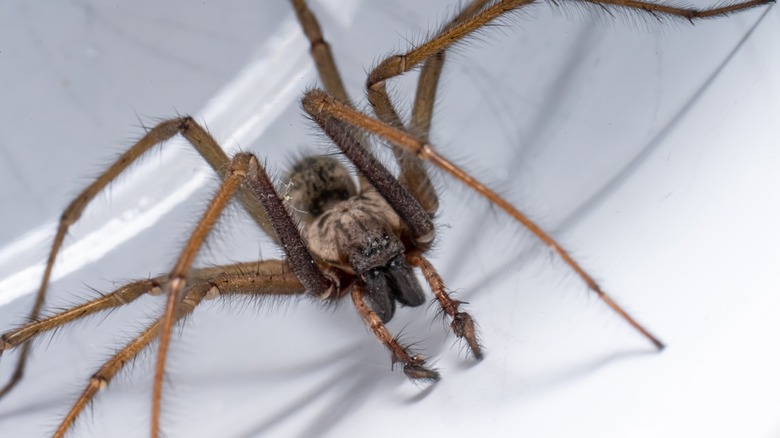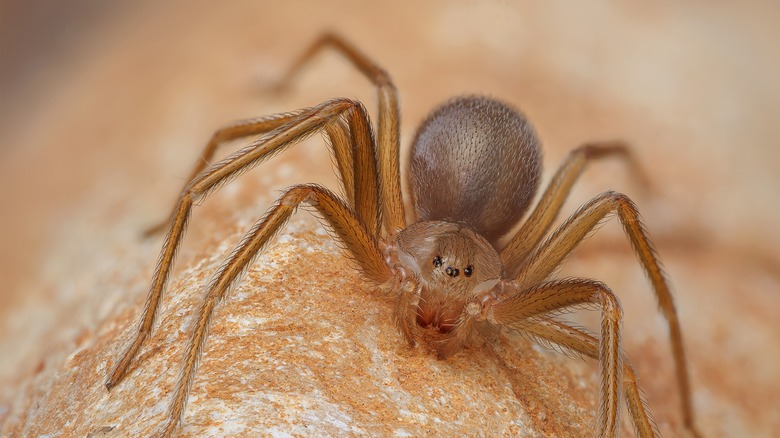Why You Should Learn To Recognize A Giant House Spider (& What To Look Out For)
We may receive a commission on purchases made from links.
Often breeding anxiety in homeowners due to its size and sometimes mistaken identity is the giant house spider, Eratigena atrica. Moving as fast as an Olympic gold medalist, these large arachnids measure about 1/4 inch with up to a four-inch leg span. Some people may mistake it for a more dangerous hobo (Eratigena agrestis) or brown recluse (Loxosceles reclusa), so it's worth understanding how it contrasts from a doppelganger.
Seeing too many spiders in your home may signal other insect infestations thanks to a lack of cleanliness, clutter, and unrepaired cracks. Therefore, sighting them may be the perfect reminder to ensure you keep your home clean and seal open crevices near windows and doors that you may have ignored. However, once you identify the giant house spider, you may find some relief in the free pest control that protects your home's ecosystem from an infestation that may be a bigger problem. After all, the giant house spider has the typical arachnid diet of feasting on destructive and disease-spreading insects like cockroaches, flies, moths, and mosquitoes. Plus, they don't bite humans unless threatened.
Unlike black widow spiders, their venom isn't poisonous to humans as it's used for their insect prey. Otherwise, their bites aren't serious and they are much more likely to run away from you — very quickly by up to half a meter per second. From large sheet-like webs to leg markings to its leaf-shaped abdominal designs, here are some ways to tell if you have a gentle giant on your hands.
How to tell you have a more dangerous spider
As you pull those stored sweaters and coats from your garage, basement, or attic before autumn ends, you can encounter a giant house spider, unless they're hiding under wood piles, like firewood in your shed. Look out for flat sheet-like webs with a funnel at the end — similar to a hobo spider. Its catwalk-length limbs have very noticeable markings of a chevron (inverted-V symbol) and dark bands between each joint. However, their hobo twins usually don't have these limb markings. Both display abdomen designs, but your giant house spider's identity is secured by a distinctive and noticeable leaf pattern.
Not only are the eyes the window to the soul, but they are the window to not being mistaken for the big brown recluse spider (Loxosceles reclusa). If you bust out your Nazano magnifying glass and see eyes broken into two straight rows of four instead of three or four clusters, you have a giant house spider. However, the brown recluse spider only has six eyes (set in pairs). Instead of chevrons and leaves, the brown recluse has small back markings in the shape of a violin.
Produced in small amounts, the brown recluse releases necrotoxic venom that won't kill you but can cause localized tissue death. If it feels threatened, the hobo can deliver a painful bite that can cause complications like headache, fatigue, and nausea. Therefore, it is worth knowing you have a giant house spider instead.

